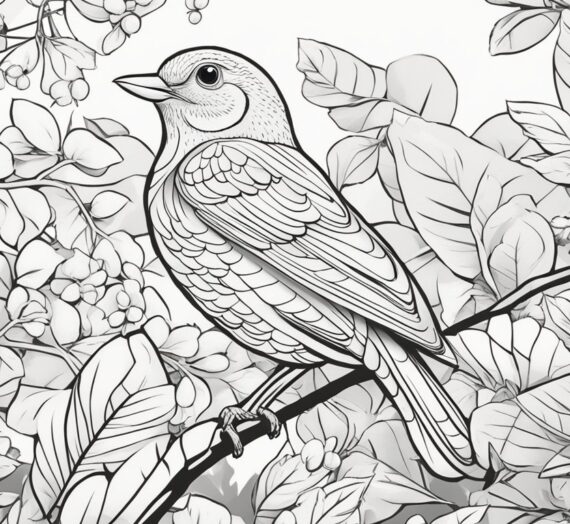Turtle Coloring Page: Free Printable for Kids and Adults. Turtle coloring pages are a fun and engaging way to introduce children to the world of art and creativity. These pages offer a wide range of designs, from realistic to abstract, that appeal to children of different ages and levels of skill. Coloring pages featuring turtles can also be a great educational tool, as they can help children learn about these fascinating creatures and their habitats.
Turtle Coloring Page

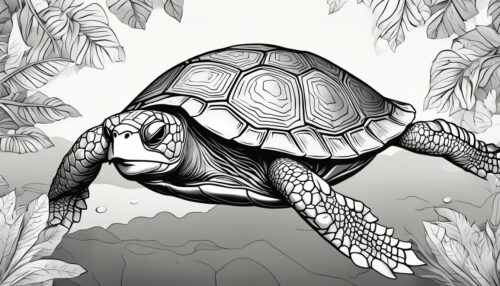
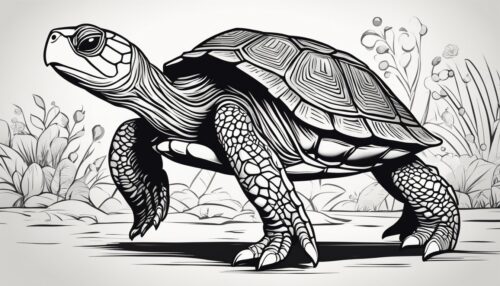
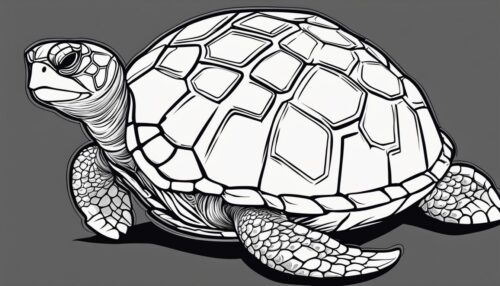
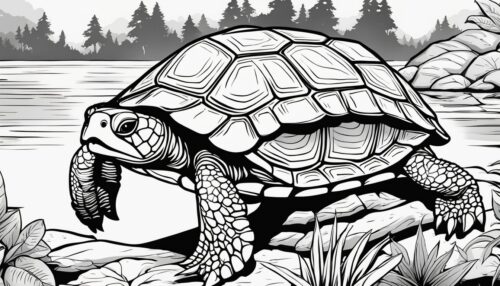
One of the benefits of turtle coloring pages is that they can be used to improve fine motor skills. Children can practice holding and using pencils or crayons to color within the lines of the turtle designs. This can help improve hand-eye coordination and dexterity, which are important skills for many activities in life. Additionally, coloring pages can help children develop their creativity and imagination, as they can use different colors and patterns to bring their own unique vision to the turtle designs.
Whether you are a parent, teacher, or caregiver, turtle coloring pages can be a great addition to your collection of educational resources. They offer a fun and engaging way to teach children about turtles and the world around them, while also improving their fine motor skills and creativity. With so many different designs and styles available, there is sure to be a turtle coloring page that appeals to every child. Best Tours from Rome to Pompeii
Turtle Coloring Page Basics





Turtle coloring pages are a fun and engaging way to introduce children to the world of turtles. These pages are not just a source of entertainment but also provide an opportunity for children to learn about the different types of turtles and their habitats.
When it comes to selecting turtle coloring pages, there are a few basic things to keep in mind. First, it is important to choose pages that are age-appropriate. Younger children may prefer simpler designs with larger spaces to color, while older children may enjoy more intricate designs that challenge their creativity.
Second, it is important to choose pages that accurately depict turtles. This can help children learn about the different physical characteristics of turtles, such as their shells, legs, and heads.
Third, it is important to choose pages that are visually appealing. Bright colors and interesting designs can help keep children engaged and interested in the activity.
Parents and educators can also use turtle coloring pages as a tool to teach children about the importance of conservation and protecting the environment. By discussing the habitats and behaviors of turtles, children can learn about the impact of human activities on these animals and the need for conservation efforts.
Overall, turtle coloring pages are a fun and educational activity that can help children learn about the fascinating world of turtles while also developing their creativity and artistic skills.
Types of Turtle Coloring Pages





Realistic Turtle Pages
Realistic turtle coloring pages are perfect for those who want to learn more about turtles while coloring. These pages feature detailed illustrations of turtles with accurate proportions and markings. They are ideal for children who are interested in nature and want to learn more about turtles.
Cartoon Turtle Pages
Cartoon turtle coloring pages are perfect for children who love turtles and cartoons. These pages feature fun and playful illustrations of turtles in various situations. They are ideal for children who want to explore their creativity and imagination while coloring.
Abstract Turtle Designs
Abstract turtle coloring pages are perfect for those who want to explore their creativity and create unique designs. These pages feature abstract illustrations of turtles with bold lines and shapes. They are ideal for children and adults who want to create their own unique turtle designs.
Turtle Mandalas
Turtle mandala coloring pages are perfect for those who want to relax and destress while coloring. These pages feature intricate turtle designs in circular patterns. They are ideal for adults who want to unwind after a long day or for children who want to improve their focus and concentration skills.
Overall, there are many different types of turtle coloring pages to choose from. Whether you prefer realistic illustrations or abstract designs, there is a turtle coloring page that will suit your preferences. With a wide variety of options available, anyone can enjoy the relaxing and creative benefits of coloring turtle pages.
Benefits of Turtle Coloring Pages





Educational Value
Turtle coloring pages are not only fun but also educational. Coloring helps children learn about colors, shapes, and patterns. By coloring turtle pages, children can also learn about different types of turtles, their habitats, and their behaviors. For instance, coloring a sea turtle can teach children about marine life and ocean conservation. As children color, they can also ask questions and learn more about the world around them.
Stress Relief
Coloring turtle pages can be a great stress relief activity for both children and adults. Coloring has been shown to reduce anxiety and promote relaxation. As people color, they can focus on the present moment and let go of their worries. Coloring can also be a form of meditation, which can help calm the mind and reduce stress levels. By coloring turtle pages, people can take a break from their busy lives and enjoy a peaceful activity.
Motor Skills Development
Coloring turtle pages can help develop children’s motor skills. Coloring requires children to hold and manipulate crayons or markers, which can improve their hand-eye coordination and fine motor skills. By coloring turtle pages, children can also practice their grip and control, which can help them with other activities such as writing and drawing. Coloring can also help children develop their creativity and imagination.
In conclusion, turtle coloring pages offer a variety of benefits for both children and adults. They can be a fun and educational activity that promotes stress relief and motor skills development. By coloring turtle pages, people can learn about turtles and their habitats while also enjoying a relaxing and creative activity.
Choosing the Right Coloring Tools




When it comes to coloring turtle coloring pages, choosing the right coloring tools can make all the difference. Here are some tips to help you choose the best tools for your coloring needs:
Colored Pencils
Colored pencils are a popular choice for coloring turtle coloring pages. They come in a wide variety of colors and can produce vibrant, rich hues. They are also easy to use and blend well.
Markers
Markers are another great option for coloring turtle coloring pages. They come in a wide variety of colors and can produce bold, vibrant hues. They are also easy to use and can cover large areas quickly.
Crayons
Crayons are a classic coloring tool and can be a great choice for younger children. They come in a wide variety of colors and are easy to use. However, they may not produce as vibrant or rich colors as other options.
Other Tools
Other coloring tools, such as watercolors or pastels, can also be used to color turtle coloring pages. However, they may require more skill and experience to use effectively.
When choosing coloring tools, it is important to consider your own preferences and skill level. Experiment with different tools to find the ones that work best for you. With the right tools and a little practice, you can create beautiful, vibrant turtle coloring pages that you will be proud to display.
Printing Tips for High-Quality Pages





When it comes to printing turtle coloring pages, there are a few tips that can help ensure a high-quality output. These tips can help you achieve crisp lines, vibrant colors, and an overall professional look.
Use High-Quality Paper
One of the most important factors in achieving high-quality printed pages is to use high-quality paper. A thicker paper with a matte finish can help prevent ink from bleeding through and can provide a more durable finished product. It is recommended to use a paper with a weight of at least 80-100 lb.
Adjust Printer Settings
Adjusting printer settings can also help achieve high-quality pages. Make sure to select the appropriate paper type and quality settings in the printer’s preferences. It is also recommended to print in high-quality mode, which may take longer but will produce a sharper image.
Check Ink Levels
Before printing, it is important to check the ink levels in the printer. Running out of ink mid-print can result in a patchy or faded output. It is also recommended to use high-quality ink cartridges to achieve the best results.
Allow Time to Dry
After printing, it is important to allow the pages to fully dry before handling or framing. Wet ink can smudge or smear, ruining the finished product. It is recommended to let the pages dry for at least 24 hours before handling.
By following these tips, anyone can achieve high-quality printed turtle coloring pages. With the right materials and settings, a professional-looking finished product is easily attainable.
Creative Ideas for Finished Pages





Once you have finished coloring your turtle pages, there are many creative ways to use them beyond just storing them away. Here are some ideas for how to turn your finished pages into beautiful and useful items.
Wall Art
One way to showcase your finished turtle coloring pages is to turn them into wall art. You can frame them individually or create a collage of several pages. This is a great way to add a pop of color and personality to any room in your home. You can also use the framed pages as gifts for friends and family.
Personalized Gifts
Another way to use your finished turtle coloring pages is to turn them into personalized gifts. You can create custom bookmarks, notecards, or even wrapping paper. Simply cut out the colored turtle designs and use them to decorate your chosen gift item. This is a thoughtful and unique way to show someone you care.
Educational Materials
Turtle coloring pages can also be used as educational materials for children. You can create flashcards or memory games using the colored turtle designs. This is a fun and engaging way to teach children about different species of turtles and their habitats. You can also use the coloring pages to teach children about color theory and different art techniques.
Overall, there are many creative ways to use your finished turtle coloring pages. Whether you choose to display them as wall art, turn them into personalized gifts, or use them as educational materials, your colored turtle designs are sure to bring joy and beauty to those who see them.
Turtle Species and Habitats
Turtles are fascinating creatures that are found in a variety of habitats around the world. There are around 356 species of turtles, and they are classified into 14 families. These families are further divided into two groups: the Cryptodira and the Pleurodira.
The Cryptodira, also known as hidden-necked turtles, are the most common type of turtle. They can be found in almost every part of the world, including oceans, rivers, and lakes. The Pleurodira, also known as side-necked turtles, are found mainly in the southern hemisphere, particularly in South America, Africa, and Australia.
Some of the most well-known species of turtles include the green sea turtle, the loggerhead sea turtle, and the leatherback sea turtle. These species are found in oceans around the world and are known for their large size and distinctive shells.
Turtles also inhabit freshwater environments, such as rivers, lakes, and ponds. The painted turtle, for example, is a common freshwater turtle found in North America. It is known for its brightly colored shell and is often kept as a pet.
In addition to their varied habitats, turtles also have diverse diets. Some species, such as the green sea turtle, are herbivores and feed on seagrasses and algae. Others, such as the snapping turtle, are carnivores and feed on fish, insects, and small mammals.
Overall, turtles are an important part of many ecosystems and their conservation is crucial to maintaining the balance of these habitats. By teaching children about the different species of turtles and their habitats, we can help to promote awareness and conservation efforts for these fascinating creatures.
Conservation and Awareness




Threats to Turtles
Turtles are among the most endangered species on the planet. They face numerous threats that have led to a significant decline in their population. Some of the most significant threats to turtles include habitat loss, climate change, pollution, and poaching.
Habitat loss is a significant threat to turtles, as their natural habitats are being destroyed at an alarming rate due to human activities such as coastal development, deforestation, and agriculture. Climate change is also a significant threat to turtles, as it affects the temperature and moisture levels of their nesting sites, which can lead to a decrease in hatching success rates.
Pollution is another significant threat to turtles, as they are often found entangled in fishing nets and plastic debris, which can cause injury and death. Turtles are also affected by oil spills, which can cause long-term damage to their habitats and food sources.
Poaching is another significant threat to turtles, as they are hunted for their meat, shells, and eggs, which are considered delicacies in many parts of the world. The illegal trade in turtle products is a multi-million-dollar industry, which has led to the decline of many turtle populations.
Conservation Efforts
To address the threats facing turtles, numerous conservation efforts have been put in place. These efforts include habitat protection, captive breeding programs, and public awareness campaigns.
Habitat protection is one of the most effective ways to conserve turtles, as it helps to preserve their natural habitats and prevent further destruction. This can be achieved through the establishment of protected areas and the enforcement of laws and regulations that prohibit destructive activities such as logging and mining.
Captive breeding programs have also been established to help increase turtle populations. These programs involve breeding turtles in captivity and releasing them into the wild to boost wild populations.
Public awareness campaigns are also essential in conserving turtles, as they help to educate people about the threats facing turtles and the importance of their conservation. These campaigns can help to reduce demand for turtle products and encourage people to take action to protect these endangered species.
In conclusion, turtles are facing numerous threats that have led to a significant decline in their population. However, through habitat protection, captive breeding programs, and public awareness campaigns, we can work to conserve these amazing creatures and ensure that they continue to thrive in the wild.
Online Resources for Turtle Coloring Pages
There are numerous online resources available for turtle coloring pages, ranging from simple designs for young children to intricate patterns for adults. These resources can be accessed for free and provide a fun and educational activity for both kids and adults alike.
One of the most popular online resources for turtle coloring pages is Mom Loves Best. They offer a curated collection of 50 printable turtle coloring pages that are not only fun but also educational. These pages provide an avenue for creativity and a journey into the vibrant undersea kingdom. They are suitable for young enthusiasts or simply those young at heart.
Another great online resource for turtle coloring pages is Free Coloring Pages. They offer a wide range of printable coloring pages of turtles, including cartoons, animals, nature, and Bible themes. The coloring pages are suitable for preschoolers and older kids at school. They provide a new realistic level of imagination and offer both hard and detailed patterns, advanced animal drawings, and simple designs.
Monday Mandala is another online resource that offers a collection of 36 turtle coloring pages in free PDF printables. They also provide word searches with a turtle theme that can be affixed to a poster board side-by-side with the finished coloring page. This provides an opportunity for kids to tackle both the word find and coloring the turtle.
In addition to these resources, there are also free printable turtle coloring pages for kids and adults. These pages offer suggestions for making turtle coloring pages into a fun arts and crafts time. They provide learning activities that can be enjoyed by kids and adults alike. Overall, these online resources offer a fun and educational activity for all ages.
How to Create Your Own Turtle Coloring Page
Creating your own turtle coloring page can be a fun and rewarding activity for both kids and adults. With a few simple steps, you can make a unique and personalized coloring page that you can enjoy coloring for hours. Here are some tips on how to create your own turtle coloring page:
Step 1: Choose Your Turtle Image
The first step in creating your own turtle coloring page is to choose the turtle image that you want to use. You can find turtle images online or draw your own. Make sure that the image is clear and has well-defined lines so that it will be easy to color.
Step 2: Trace the Image
Once you have your turtle image, the next step is to trace it onto a blank piece of paper. You can use tracing paper or a lightbox to make this step easier. Trace the outline of the turtle and any other details that you want to include, such as the shell pattern or the eyes.
Step 3: Add Details
After you have traced the turtle image, you can add your own details to make it unique. You can add patterns to the shell, draw in a background, or add other elements to the image. Be creative and have fun with it!
Step 4: Color Your Turtle
Once you have your turtle coloring page, it’s time to start coloring! Use your favorite coloring tools, such as markers, colored pencils, or crayons, to bring your turtle to life. You can use realistic colors or create your own color scheme.
Creating your own turtle coloring page is a great way to express your creativity and have fun. With these simple steps, you can make a unique and personalized coloring page that you can enjoy coloring for hours.


